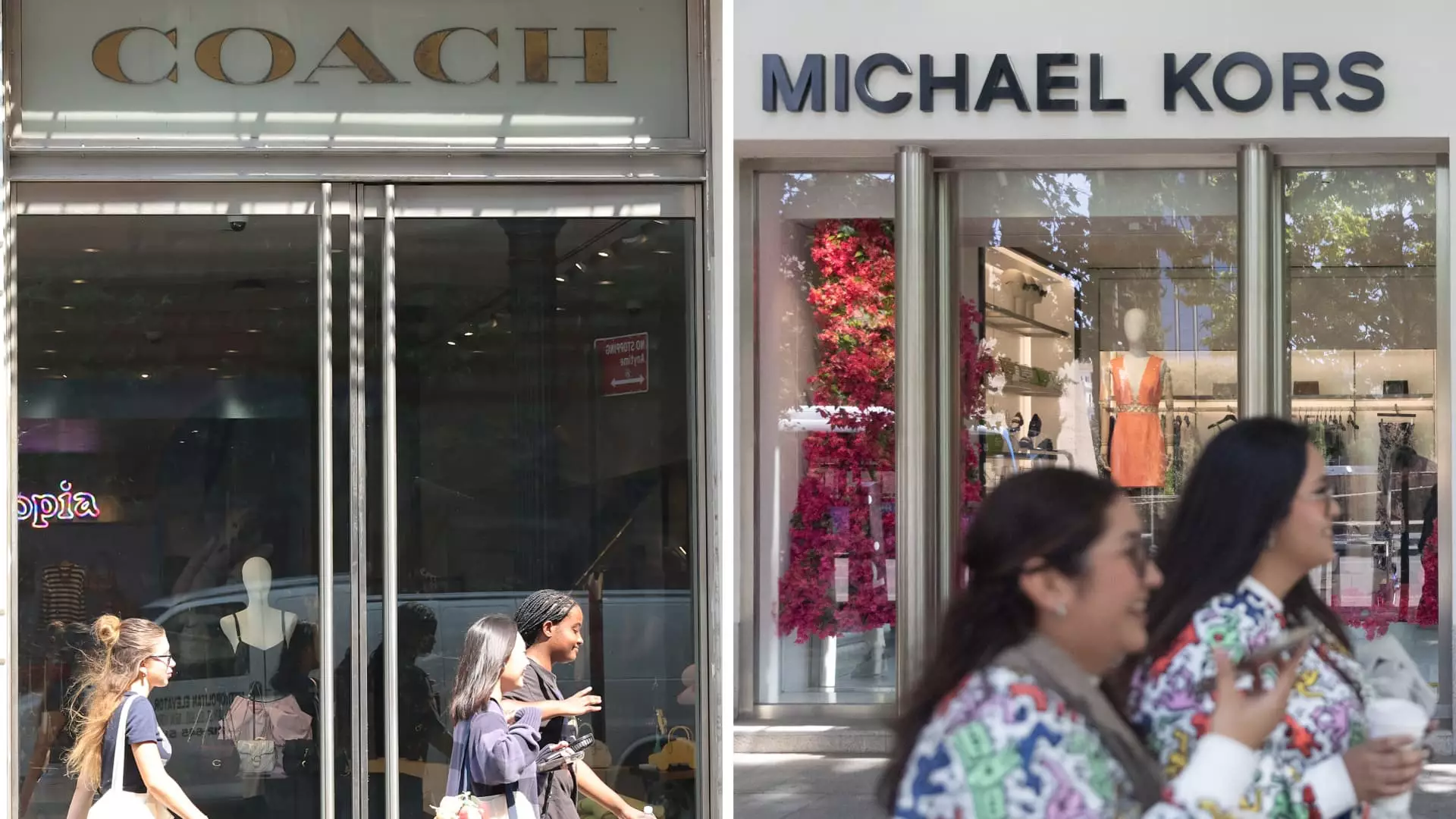In a significant turn of events in the luxury fashion industry, a federal judge’s ruling to block Tapestry’s acquisition of Capri has sent shockwaves through the market. This decision emerged after a brief trial in New York, where the stakes of a potential merger worth $8.5 billion were hotly contested. Judge Jennifer Rochon upheld the Federal Trade Commission’s (FTC) request for a preliminary injunction, effectively stalling the union of two of America’s largest luxury brands, which would have combined Tapestry’s Coach, Kate Spade, and Stuart Weitzman with Capri’s Versace, Jimmy Choo, and Michael Kors.
The immediate aftermath of the ruling saw contrasting fortunes for Tapestry and Capri in the stock market. Tapestry’s shares enjoyed a notable 10% rally following the court’s decision, while Capri’s stock plummeted by approximately 50%. This divergence underscores the market’s belief in Tapestry’s potential for growth and resilience despite the setback. Tapestry wasted no time in announcing intentions to appeal the ruling, framing the judicial intervention as a misinterpretation of both legal and factual circumstances.
The company expressed disappointment, asserting that both it and Capri operate in a highly competitive industry characterized by continuous evolution and a wide range of product offerings. Tapestry maintained that the merger would enhance competitiveness by streamlining operations, innovating product offerings, and expanding market reach—all of which they argue would ultimately benefit consumers.
Regulatory Scrutiny and Financial Implications
The merger agreement included financial contingencies, whereby Tapestry would compensate Capri for incurred expenses should the deal fail to receive regulatory approval, with potential payouts ranging between $30 million and $50 million. On the contrary, Capri faces a hefty breakup fee of $240 million if it decides to walk away from the proposed merger. This financial stipulation reflects the high stakes involved and indicates the seriousness with which both companies view the potential union.
The underlying rationale behind Judge Rochon’s decision remains undisclosed, as the detailed opinion is currently under seal. However, the FTC’s legal actions, initiated in April, serve as a clear indication of governmental concerns that the merger could negatively impact consumer welfare by reducing competition in the handbag market. The agency argues that such consolidation would lessen market access for affordable luxury goods and negatively affect employee compensation and benefits.
Henry Liu, the FTC’s Bureau of Competition director, articulated a perspective that resonates with consumer concerns. He described the ruling as a triumph for consumers, emphasizing its importance in maintaining competitive pricing in the luxury handbag market—a realm that millions of consumers frequently rely on. The ruling coincides with heightened consumer sensitivity concerning prices due to prolonged inflationary pressures.
Consumers today are acutely aware of their spending power, as evidenced by the broader economic discourse. With governmental forces, including the Biden administration and various political candidates, advocating for stronger competition measures to drive down prices, the ruling reflects a broader zeitgeist focused on consumer protection over unrestricted corporate expansion.
The Future of Luxury Brand Competition
As the FTC under Chair Lina Khan continues to scrutinize mergers across various sectors—including groceries, technology, and fashion—Tapestry’s aspirations for the future might still be shrouded in uncertainty. During the recent trial, witnesses cited research asserting that the merger could inflate prices for handbags and related accessories, while simultaneously diminishing the incentive for product innovation. Tapestry and Capri countered these claims by asserting that they do not primarily compete with one another, arguing that the market now offers consumers an unprecedented range of choices.
As trends rapidly evolve in an increasingly social media-driven market, particularly influenced by platforms like TikTok, consumer preferences regarding handbags and luxury items can shift overnight. This dynamic market environment emphasizes the need for robust competition and continuous innovation, elements both companies promised to uphold.
The ruling to block Tapestry’s acquisition of Capri is emblematic of the delicate balance between corporate consolidation and competitive market dynamics. While the immediate implications may prove challenging for Tapestry and Capri, their future endeavors will likely continue to be shaped by regulatory scrutiny and the demand for greater competition. As the luxury fashion sector navigates these turbulent waters, both brands will undoubtedly strive to enhance their offerings in pursuit of consumer loyalty and market success, all while adapting to an ever-evolving landscape.


Leave a Reply